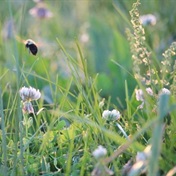Amid the highest recorded pollen counts in history, Health24 will be bringing you exclusive pollen count updates courtesy of the UCT Lung Institute's Allergy and Immunology Unit.
Here are the major city updates for 19 March:
Cape Town (Western Cape)
Grass levels were low. Tree and weed pollen counts were also low. Tree pollen types included eucalyptus (Myrtaceae), karee (Rhus), pepper tree (Schinus sp.) and elm (Ulmus). Weed pollen detected were waxberry (Morella sp.), the daisy family (Asteraceae), nettles (Urticaceae), goosefoot (Chenopodiaceae) and English plantain (Plantago sp.). Fungal spore counts were low.
Count: 11 (moderate)
Johannesburg (Gauteng)
Grass levels were high. Tree levels were low but varied and the types detected were bush willow (Combretaceae), cypress (Cupressaceae), Australian pine or beefwood (Casuarina), mulberry (Moraceae), eucalyptus (Myrtaceae), pine (Pinaceae), plane (Platanus), poplar (Populaceae), oak (Quercus) and elm (Ulmaceae).
The low weed levels included goosefoot (Chenopodiaceae), the daisy family (Asteraceae), the carnation family (Caryophyllaceae), ferns (Polypodiaceae), protea (Proteaceae) the spurge family (Euphorbiaceae) and heather (Ericaceae). Moulds were low.
Count: 35 (high)
Pretoria (Gauteng)
Grasses were moderate. Low tree levels included eucalyptus (Myrtaceae), pine (Pinaceae) and marula (Sclerocarya). Low weed levels were detected and the types included were goosefoot (Chenopodicaeae), English Plantain (Plantaginaceae) and the spurge family (Euphorbiaceae). Moulds were low.
Count: 13 (moderate)
Bloemfontein (Orange Free State)
Grass counts were high. Tree and weed counts were low. Tree pollen detected were acacia (Acacia sp.), eucalyptus (Myrtaceae sp.), pine (Pinus sp.), olive (Oleaceae) and karee (Rhus sp.). Weed pollen included the daisy family (Asteraceae) and goosefoot (Chenopodiaceae). Fungal spore counts were low.
Count: 77 (very high)
Kimberley (Northern Cape)
Grass levels were high. Grass types identified included maize (Zea mays). Low tree levels were detected, and the types were eucalyptus (Myrtaceae), the pea family (Fabaceae), kareeboom (Rhus/Searsia) and waxberry (Morella). Low weed types detected were the daisy family (Asteraceae), goosefoot (Chenopodiaceae) and nettle (Urticaceae). Moulds were low.
Count: 34 (high)
Durban (KZN)
No pollen information available.
Port Elizabeth (Eastern Cape)
Grass levels were low. Tree and weed pollen levels were also low. Tree pollen types included waxberry (Morella) and acacia (Acacia sp.). Weed pollen detected were the daisy family (Asteraceae), sedges (Cyperaceae), goosefoot (Chenopodiaceae), English plantain (Plantago sp.) and nettles (Urticaceae). Mould levels were low.
Count: 6 (low)
See the full report HERE.
Reference ranges:
Overall, Trees, Grasses and Weeds all use the same values (grains per cubic metres of air)
Overall count is the daily average of pollen grains per cubic metres of air (trees plus grasses plus weeds).
In partnership with the the UCT Lung Institute's Allergy and Immunology Unit.
As the pollen problem worsens, precise and expanded monitoring becomes even more essential.




 Publications
Publications
 Partners
Partners












